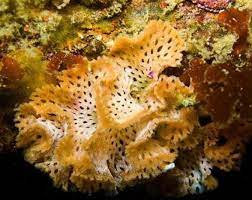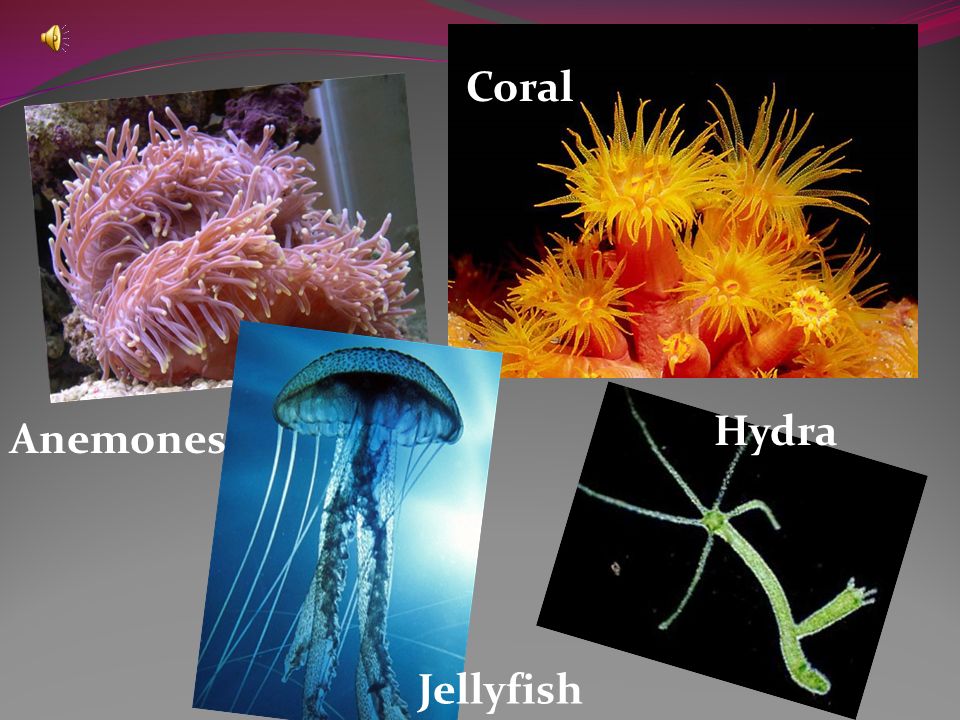You know those jellyfish, sea anemones, and corals you see in aquariums or ocean documentaries? Believe it or not, they’re all part of the same weird and wonderful animal family, called cnidarians. (It’s a tricky word — it sounds like “nid-air-ee-ans.”) They might not look related at first glance, but they all have soft bodies, live in water, and come with stinging tentacles. Think of them as the ocean’s more delicate but sneaky residents.
Sea anemones are actually pretty social, in their own way. Some of them team up with other animals — like the famous clownfish in Finding Nemo. The fish gets a safe place to live, and in return, the anemone gets fed and cleaned. It’s kind of like a roommate who brings snacks and tidies up.Jellyfish, anemones and corals Some anemones even hitch a ride on crabs’ shells or claws — talk about creative living!
Jellyfish, though? They’re like the time-travelers of the sea. Certain types, like the Moon Jelly, can actually turn back into their younger selves and grow up all over again. If they lose a piece of themselves, no problem — they just grow it back. It’s like ocean magic. Corals can’t go back in time like that, but they can slowly regrow damaged bits and help rebuild their reef homes.
Speaking of corals, they’re not just pretty ocean decorations. Each piece is made up of thousands of tiny animals called polyps, all living and working together like a big underwater city. Some corals form huge, colorful reefs, while others live quietly in cooler waters .Jellyfish, anemones and corals Even in places like New Zealand, you can find all sorts of corals — some with six tentacles, others with eight. They’re way more diverse than most people think.
These creatures come in two main “moods,” you could say. Some are floaty and free, like jellyfish, drifting through the water. Others stay put and attach themselves to rocks or coral, like sea anemones and many corals.
Jellyfish themselves come in all sorts Jellyfish, anemones and corals . There are the ones you find bobbing around in the ocean, the rare stalked ones that do these strange little somersaults, and then there are box jellyfish — which are square-shaped and can be seriously dangerous.
Box Jellyfish

Box Jellyfish – A Beautiful but Dangerous Sea Creature
What is it like?
The box jellyfish might look almost invisible in the water, but don’t be fooled — it’s one of the most dangerous sea creatures out there. It has a boxy, see-through body and can have up to 60 long tentacles hanging in bunches underneath. It’s both fascinating and fearsome!
Where do they live?
Box jellyfish live in the warm coastal waters of northern Australia — from Western Australia to the Northern Territory and all the way to Queensland.
They’re usually seen in the summer months, especially near the shore — in places like mangroves, rivers, creeks, and shallow bays. On hot, cloudy, and calm days, they sometimes come really close to the beach, looking for food like prawns. That’s when people are most at risk of getting stung — especially if they’re swimming in murky water.
Are they dangerous to humans?
Yes — very! A sting from a box jellyfish can be extremely painful and even life-threatening, so it’s important to act fast.
📞 Call emergency services right away
- From a mobile: 112
- From a landline: 000
Here’s what you should do:
- First, keep the person calm. It’s important they don’t panic or rub the sting.
- Quickly pour vinegar over the stung area — do this for at least 30 seconds. It helps stop the venom from spreading.
- If you can, carefully remove the tentacles using tweezers or even a stick — but try to get medical help as soon as possible.
- If the person stops breathing or their heart stops, be ready to give CPR until help arrives.
Lace Coral

Lace Corals: Not Really Lace, Not Really Coral – But Totally Fascinating
Have you ever been walking along the beach after a storm and spotted something that looks like a piece of delicate white lace in the sand? That’s not seaweed or a bit of broken shell — it might just be a piece of lace coral!
But here’s the fun part: lace corals aren’t actually coral, and they’re definitely not made of lace. They’re part of a group of tiny sea animals called bryozoans. These little creatures live together in big colonies and build beautiful, lacy structures that harden over time — like a natural underwater artwork.
Where do they come from?
These lace-like colonies usually grow on rocks under the sea, but they’re not picky — you can also find them clinging to sea walls, pier poles, and even boat hulls. That makes them super important for marine life, because they create little homes for all sorts of sea creatures. But for people who work in ports or on ships, they can sometimes be a bit of a nuisance!
They’ve Been Around Forever (Almost)
One of the coolest things about bryozoans is how ancient they are — they’ve been part of our oceans for around 480 million years! Because of their long history, scientists love studying them. They give us clues about the past, and even how marine environments have changed over time.
A Special Day for Bryozoan Lovers
In February, something exciting happened at the Australian Museum — it hosted the 8th AustraLarwood Bryozoology Symposium (don’t worry, it’s a mouthful!). Basically, it was a day when researchers and scientists from Australia and New Zealand came together to share what they’ve been learning about these incredible sea creatures.
Talks covered all sorts of topics — from ancient fossils to how bryozoans build their structures, and even how they might play a role in future resource studies. The event started with a lovely talk by David Bock, sharing a short history of the Museum. Fittingly, the final presentation was given by his father, Phil Bock, a respected bryozoan expert, who gave a tour through Australia’s amazing variety of bryozoans.
From the Lab to the Shoreline
After all the science talk, participants got a chance to see the Museum’s stunning bryozoan collections — both modern and fossilized. The next day, they headed out on a field trip to Gerroa, a beautiful spot south of Sydney, to see fossil bryozoans right there on the rocky shore — some of which have been sitting there since the Permian period (over 250 millions years ago).

